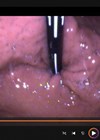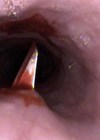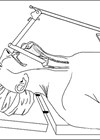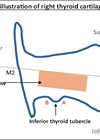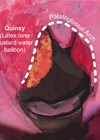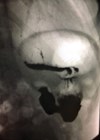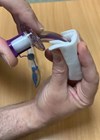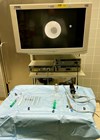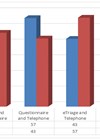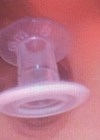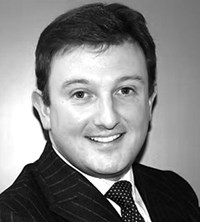How I Do It
Fibre-delivered transoral laser surgery – description of a novel technique
Transoral flexible laser surgery refers to the use of a fibre-delivered laser for laryngeal procedures via direct laryngoscopy. We hear of a novel innovation. The continuous development of instruments to perform endoscopic procedures for treatment of laryngotracheal pathology – among...
In-office management of subglottic and tracheal stenosis: balloon dilation, laser treatment and steroid injection
Laryngology continues to advance since its development as a subspecialty at the turn of the century. Rarely performed operations restricted to the surgical theatre can now be undertaken in the outpatient / office environment. This detailed article demonstrates, in a...
Transnasal oesphagoscopy
In this useful and practical article, the authors describe their use of transnasal oesophagoscopy, including the range of clinical scenarios in which it is used. What is TNO? Transnasal oesphagoscopy (TNO) is a technique that can be used in the...
Transnasal oesophagoscopy (TNO)-guided secondary tracheoesophageal puncture (TEP) under local anaesthesia
Here, the authors describe a convenient use of the transnasal oesophagoscope to create a new tracheoesophageal puncture in the outpatient clinic setting. Tracheoesophageal puncture (TEP) with voice prosthesis insertion is a reliable and effective technique for surgical voice restoration (SVR)...
Laryngeal endoscopies
Here, the authors provide some great tips for performing a successful microlaryngoscopy which should be of benefit to those learning this very common procedure. In this article, we will discuss tips for performing a microlaryngoscopy, and different laryngoscopes used to...
Type 1 thyroplasty using a novel and inflatable implant from APrevent® VOIS
Unilateral vocal cord immobility severely impacts voice, swallowing, and airway functions. A novel approach offers adjustable medialisation for improved patient outcomes. Unilateral vocal cord immobility (UVCI) can cause significant disability to voice, swallowing, and airway functions. Patients with UVCI may...
Building low-cost high-fidelity simulation for ENT
In this article, the authors describe their ingenious technique to produce affordable yet realistic simulation models for some common ENT procedures. The use of surgical simulation in otolaryngology training has significantly increased in recent years. This is most likely due...
Retrograde cricopharyngeal dysfunction (RCPD) - inability to burp: treatment with Botox injection
As unusual as it may sound, some people have great difficulty burping. We hear of one approach to tackling this problem. Retrograde cricopharyngeal dysfunction (RCPD) is a condition presenting with inability to burp, resulting in gaseous distension of the digestive...
The ‘umbrella furling’ deflation technique for cuffed tracheostomy tube - a useful tip for an easier tracheostomy insertion
In this article, the authors describe a quick and effective technique to assist with the maximal deflation of a tracheostomy tube cuff prior to insertion, thus making the process easier with less chance of damage to the cuff and a...
Sialendoscopy
Recent advances in endoscopic technology allow the ENT surgeon to access the salivary gland ductal system for both diagnostic and therapeutic reasons. In this article the authors share their experiences with using this technology, both as a standalone procedure and...
Finding the right balance: remote dizzy patient consultation during a pandemic
During the COVID pandemic, all our working patterns have changed. One significant impact had been on the management of outpatient consultations and the increase in telephone consultations and enhanced vetting. In this article the authors share their experience of managing...
Retrieval of an aspirated voice prosthesis in the awake laryngectomised patient
In this article, the authors describe a simple and effective technique for extracting an aspirated voice prosthesis from within the tracheobronchial tree in the awake laryngectomised patient using the Ambu® aScopeTM 4 Broncho endoscope. Surgical voice restoration remains the dominant...




